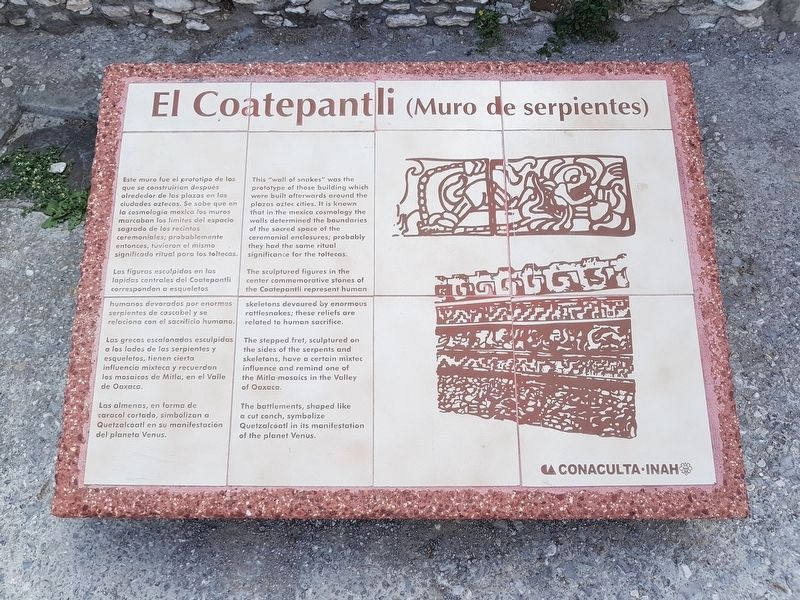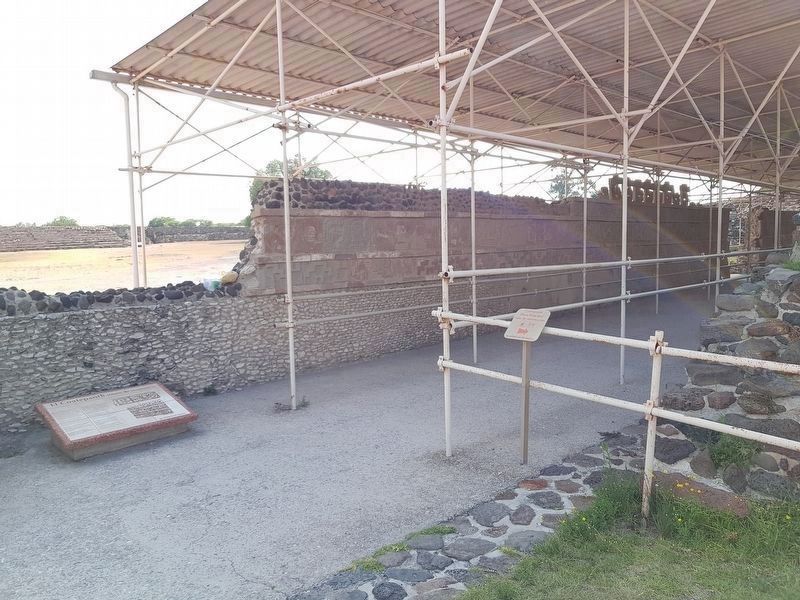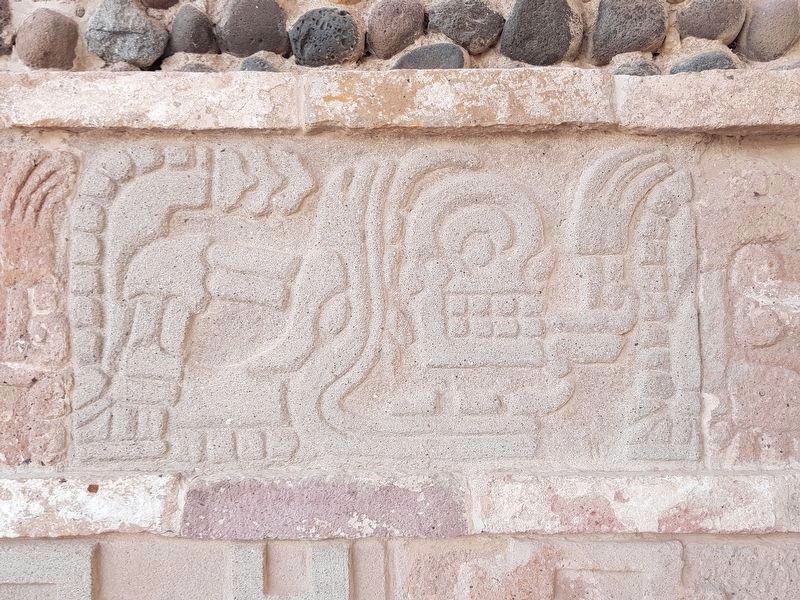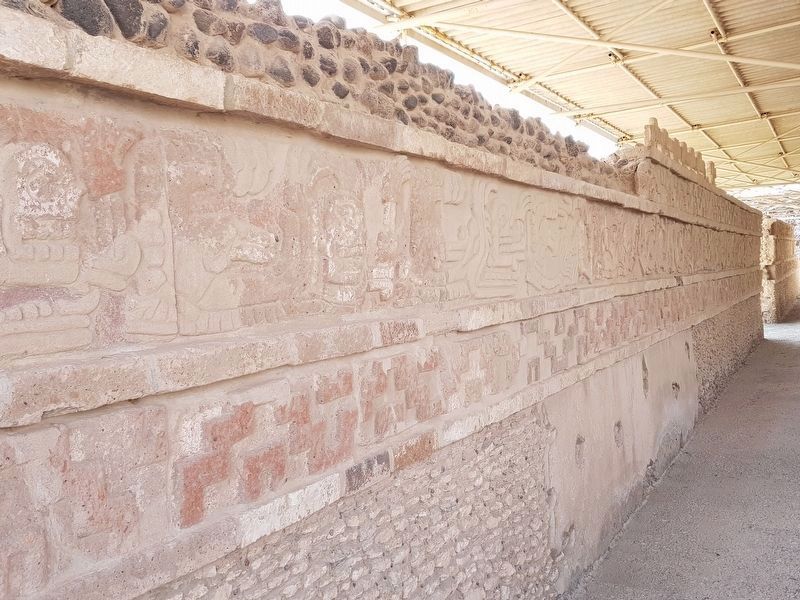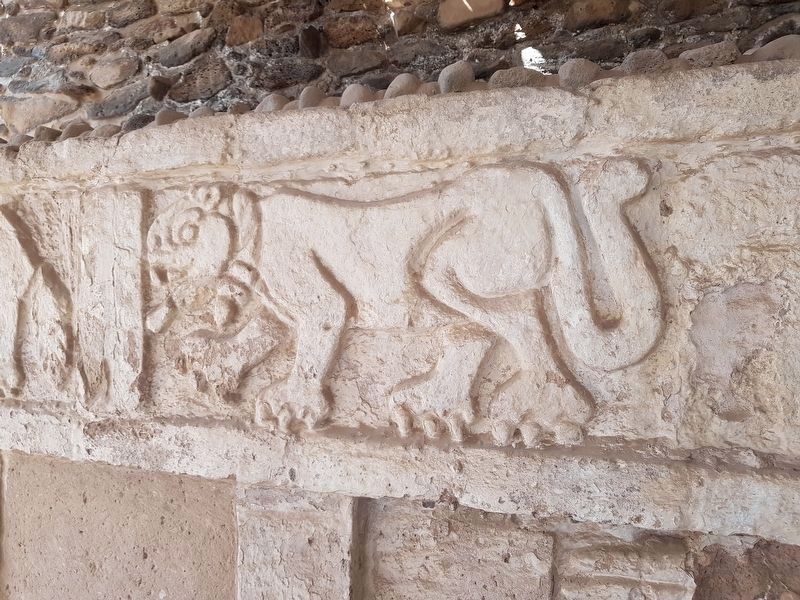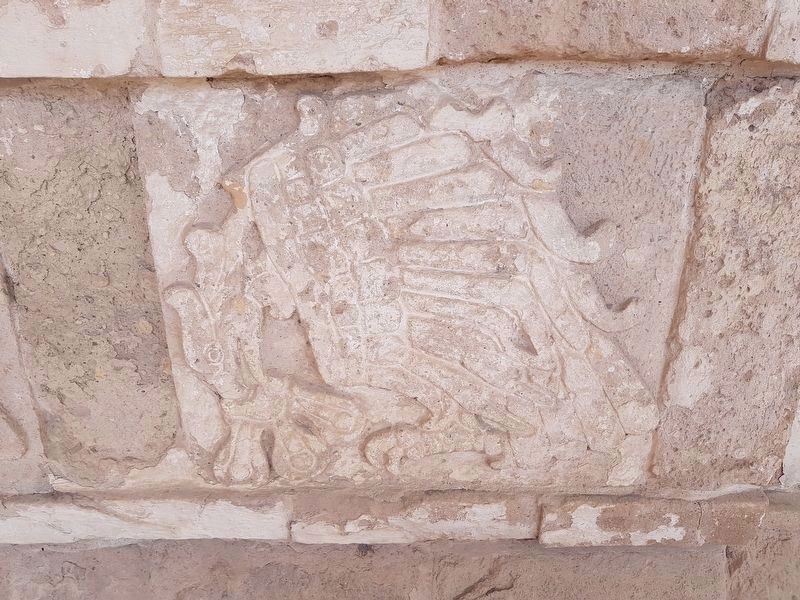Tula de Allende, Hidalgo, Mexico — The Central Highlands (North America)
El Coatepantli (Wall of Snakes)
(Muro de serpientes)
Este muro fue el prototipo de los que se construirían después alrededor de las plazas en las ciudades aztecas. Se sabe que en la cosmología mexica los muros marcaban los límites del espacio sagrado de los recintos ceremoniales; probablemente entonces, tuvieron el mismo significado ritual para los toltecas.
Las figuras esculpidas en las lápidas centrales del Coatepantli corresponden a esqueletos humanos devorados por enormes serpientes de cascabel y se relaciona con el sacrificio humano.
Las grecas escalonadas esculpidas a los lados de las serpientes y esqueletos, tienen cierta influencia mixteca y recuerdan los mosaicos de Mitla, en el Valle de Oaxaca.
Las almenas, en forma de caracol cortado, simbolizan a Quetzalcóatl en su manifestación del planeta Venus.
The Coatepantli
(The Wall of Snakes)
This "wall of snakes" was the prototype of those building which were built afterwards around the plazas aztec cities. It is known that in the mexica cosmology the walls determined the boundaries of the sacred space of the ceremonial enclosures; probably they had the same ritual significance for the toltecas.
The sculptured figures in the center commemorative stones of the Coatepantli represent human skeletons devoured by enormous rattlesnakes; these reliefs are related to human sacrifice.
The stepped fret, sculptured on the sides of the serpents and skeletons, have a certain Mixtec influence and remind one of the Mitla mosaics in the Valley of Oaxaca.
The battlements, shaped like a cut conch, symbolize Quetzalcoatl in its manifestation of the planet Venus.
Erected by CONACULTA y INAH.
Topics. This historical marker is listed in these topic lists: Anthropology & Archaeology • Architecture • Native Americans.
Location. 20° 3.866′ N, 99° 20.432′ W. Marker is in Tula de Allende, Hidalgo. Marker can be reached from Tula-Pachuca Carretera just north of Entrada a Zona Arqueológica. The marker is near the Coatepantli at the Tula Archaeological Site, towards the south from Ball Court 1. Touch for map. Marker is in this post office area: Tula de Allende HGO 42800, Mexico. Touch for directions.
Other nearby markers. At least 8 other markers are within walking distance of this marker. Pyramid B (within shouting distance of this marker); The Temple of Pyramid B (within shouting distance of this marker); The Burnt Palace (within shouting distance
of this marker); Ball Court 1 (within shouting distance of this marker); Tula (about 90 meters away, measured in a direct line); Pyramid C and the Adoratory (about 120 meters away); The Wall of Skulls (about 120 meters away); Ball Court 2 (about 150 meters away). Touch for a list and map of all markers in Tula de Allende.
Credits. This page was last revised on January 3, 2024. It was originally submitted on June 5, 2018, by J. Makali Bruton of Accra, Ghana. This page has been viewed 333 times since then and 36 times this year. Photos: 1, 2, 3, 4. submitted on June 5, 2018, by J. Makali Bruton of Accra, Ghana. 5, 6. submitted on June 8, 2018, by J. Makali Bruton of Accra, Ghana.
